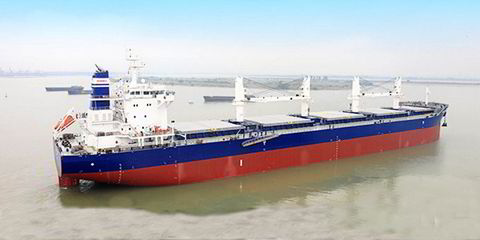One of BW LPG’s VLGCs has become the "world first" to receive LPG bunkers via a ship-to-ship (STS) transfer, according to the shipowner’s parent group.
While STS transfers of LPG cargoes are common practice, BW Group said the 84,100-cbm BW Balder (built 2017) was the first to be engaged in the transfer of LPG bunkers from another ship.
Alan Delanoe, BW LPG’s senior manager of fleet supervision, suggested technically the two types of STS operations are similar.
“There is no difference. We focus on safety and follow all established processes,” Delanoe said in BW Group’s in-house biannual magazine.
“Essentially, instead of filling our cargo tanks, we filled the deck tanks with LPG as a bunker to propel BW Balder.”
The Singapore-based conglomerate revealed that the dual-fuel ship took bunker fuel from the 5,000-cbm Epic St Martin (built 2008) in May.
BW LPG had chartered the pressurised LPG carrier from affiliate BW Epic Kosan to support its bunkering operations.
The Oslo-listed owner has embarked on a retrofit programme to convert 15 VLGCs into dual-fuel vessels capable of running on LPG and conventional fuel, including the BW Balder.
The Epic St Martin has been used to load leftover LPG from the VLGCs prior to dry-docking, and transfer LPG for bunker use to those ships after retrofit works, according to BW LPG.
The company estimated such operations can save about $200,000 to $300,000 per docking by reducing potential delays at terminals.
“This arrangement has saved our site team time and money, and it reduced the complexity of our operations and schedules,” Delanoe said.
Aside from the cargo tanks, each of the retrofitted VLGCs has two 820-cbm deck tanks aboard.
“These numbers mean that with BW Epic St Martin…we can perform quite a few STS bunker operations based on the quantity required,” Delanoe said.
He added that the dual-fuel vessels would have access to more business opportunities due to their operational flexibility.
“There are many ports around the globe where LPG bunkering facilities and infrastructure are available,” Delanoe said.
“With LPG propulsion, we do not need to stop to take traditional bunkers, which saves us time and increases the commercial availability of our vessels.”







